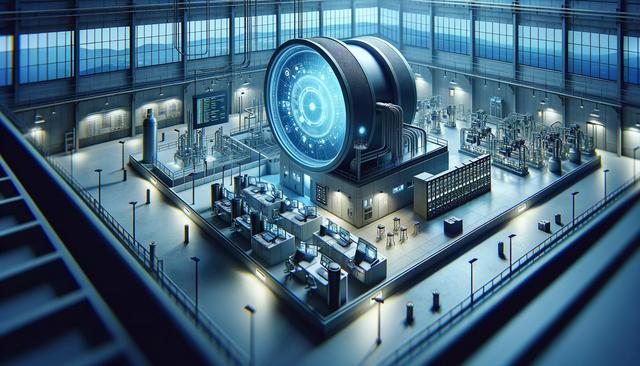Understanding the Role of Facility Monitoring Systems
Facility monitoring systems are essential tools for organizations that manage critical infrastructure, such as data centers, laboratories, manufacturing plants, and healthcare environments. These systems provide continuous oversight of environmental and security parameters to help maintain operational stability and safety. By delivering real-time data on conditions like temperature, humidity, and access control, they allow facility managers to prevent disruptions, reduce downtime, and protect valuable assets. The integration of sensors and automated alerts ensures that any deviation from acceptable thresholds is addressed promptly, minimizing the risk of operational failure.
Real-time insights are especially vital in environments where even minor fluctuations can have major consequences. For example, in pharmaceutical storage or laboratory research, maintaining precise temperature and humidity is critical to ensuring compliance and product integrity. With facility monitoring systems, staff can receive alerts via email, SMS, or centralized dashboards, enabling quick response and informed decision-making. These capabilities support proactive management and contribute to a culture of accountability and responsiveness within critical operations.
Environmental Control and Its Impact on Operations
Environmental control is a cornerstone of effective facility management. Temperature and humidity are two primary factors that influence equipment performance, product quality, and human safety. Facility monitoring systems help maintain optimal environmental conditions by continuously measuring these variables and triggering automated responses when anomalies occur. This level of control is vital for operations where fluctuations can lead to spoilage, contamination, or equipment malfunction.
Key benefits of environmental monitoring include:
- Protection of sensitive equipment from overheating or condensation
- Compliance with industry-specific environmental standards
- Enhanced operational reliability and reduced maintenance costs
In addition to monitoring, these systems can be integrated with HVAC and other environmental systems to automatically adjust conditions as needed. This automation reduces the burden on staff and ensures consistent conditions even during off-hours or emergencies. The data collected can also be used for trend analysis, helping organizations optimize their energy usage and plan for future infrastructure upgrades.
Enhancing Security Through Integrated Monitoring
Security is another critical area where facility monitoring systems provide significant value. These systems often include features such as motion detection, access control, and video surveillance integration. By centralizing security data with environmental monitoring, organizations gain a comprehensive view of their facilities, enabling faster and more accurate threat detection and response.
Common security functions supported by facility monitoring systems include:
- Access logging and authorization control for restricted areas
- Real-time alerts on unauthorized entries or suspicious activity
- Integration with emergency response protocols
These capabilities are especially important in facilities with high-value assets or sensitive data, where breaches can lead to financial losses or regulatory violations. The combination of environmental and security monitoring fosters a holistic approach to risk management, ensuring that all aspects of facility safety are addressed in a coordinated fashion.
Data-Driven Decision Making and Long-Term Planning
One of the most powerful aspects of facility monitoring systems is their ability to collect and analyze data over time. This historical data enables facility managers to identify trends, forecast potential issues, and make informed decisions about maintenance schedules, energy management, and capital investments. By transforming raw data into actionable insights, organizations can optimize their operations and extend the life of their infrastructure.
Examples of data-driven benefits include:
- Identifying recurring temperature spikes linked to equipment usage
- Determining the effectiveness of insulation or HVAC upgrades
- Predicting maintenance needs based on environmental stress patterns
Data analytics also support compliance reporting and audits, as many industries require documentation of environmental conditions over time. Facility monitoring systems make it easy to generate reports and demonstrate adherence to standards, reducing administrative burden and increasing transparency.
Choosing and Implementing the Right System
Selecting the appropriate facility monitoring system involves evaluating the specific needs of your operation, including the types of parameters to monitor, the required level of automation, and the desired integration with existing systems. Scalability is also a key consideration, as operational demands may grow or change over time. Organizations should look for solutions that offer flexibility, ease of integration, and robust support.
Important factors to consider when implementing a facility monitoring system include:
- Compatibility with legacy infrastructure and software
- Ease of use and training requirements for staff
- Availability of technical support and service agreements
Proper implementation involves not only installing the hardware and software but also training personnel and establishing clear protocols for responding to alerts. A well-implemented system becomes an integral part of daily operations, enabling proactive management and a higher standard of oversight. With the right approach, facility monitoring can evolve from a reactive tool into a strategic asset that supports long-term operational excellence.
Conclusion: Supporting Critical Operations with Reliable Oversight
For organizations that rely on precise environmental conditions and secure facilities, investing in a facility monitoring system is a practical and forward-looking decision. These systems provide the real-time oversight needed to maintain stability, ensure compliance, and safeguard assets in complex operational environments. By delivering continuous data and actionable insights, they empower teams to respond quickly, plan effectively, and maintain high standards of performance. Whether managing a medical lab, a data center, or an industrial plant, the dependable functionality of a facility monitoring system offers a crucial layer of protection and operational intelligence.




Leave a Reply